Custom Design
Having trouble standing out in a busy market? A well-considered brand development strategy is at the center of every successful enterprise. Well-written, it changes how customers see, engage with, and advocate for your business. For startups and established companies alike, strategic brand development establishes the foundation for genuine customer connections as well as sustainable growth.
This page details the key elements of successful brand development strategy with hands-on frameworks you can implement in your business today. We’ll discuss it all from learning brand basics to quantifying brand equity, all aimed at helping you develop a brand your target audience cares about and drives sustainable business outcomes.
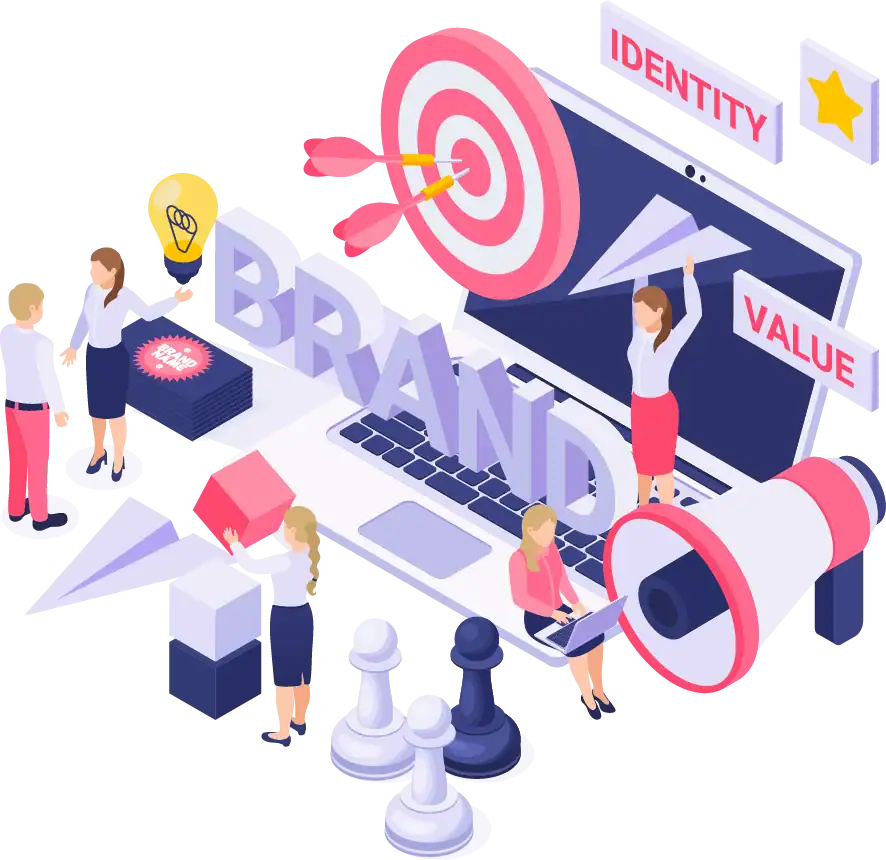
A brand development strategy is a formalized plan for the way a company will develop, reinforce, and maintain its brand in order to accomplish given business goals. A simple marketing tactic is not the same as brand development strategy, which acts on a more profound level by confronting how your business is perceived by the world and the emotional bonds it forms with consumers.
In its simplest form, brand strategy for development solves three fundamental questions: Who are we? Who do we need to reach? How will we reach them in a genuine way? This strategic process moves beyond logos and color to involve all touchpoints where customers experience your brand—ranging from your website and social media presence to customer service experiences and product experiences.
For digital-era businesses, brand development strategy must seamlessly integrate timeless branding concepts with digital innovation. The aim is to develop a consistent and compelling brand experience that builds customer loyalty and business growth in the long term.
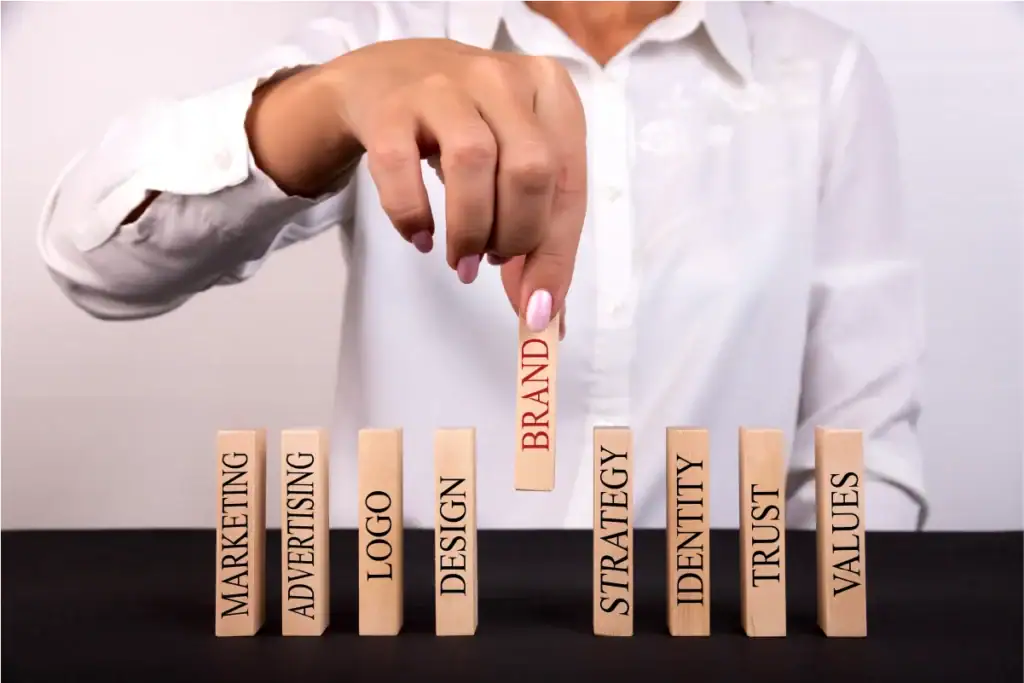
Solid brand building strategy brings tangible returns that have a direct impact on your bottom line. Here’s why strategic brand building is essential for business success:
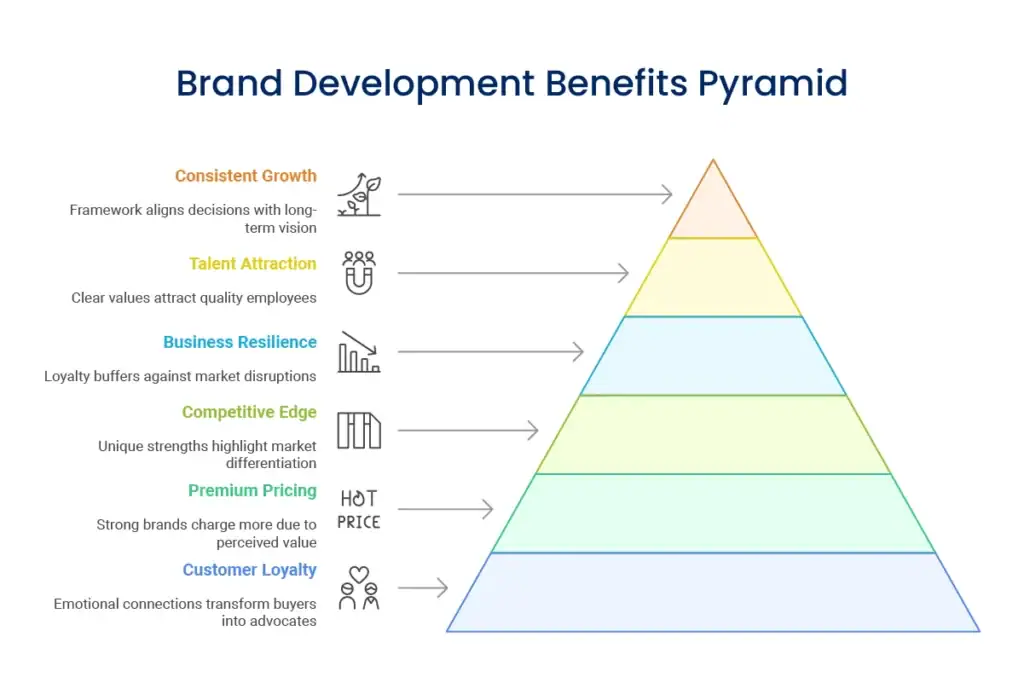
Strongly developed brands build emotional connections that turn occasional buyers into loyal advocates who come back again and again and refer their business to others.
Strong strategic positioning brands are able to charge 13-18% higher than competitors for the same products or services due to perceived greater value from consumers.
A well-defined brand strategy enables you to differentiate yourself in saturated markets by establishing your unique strengths and values instead of competing on price alone.
Strong brands bounce back more quickly from market downturns and sector disruption because customer loyalty acts as an insurance policy during bad times.
Not only do strong brands attract customers, but they also attract quality employees who desire to work for companies with defined values and market presence.
Brand build strategy framework guides business decisions that stay in line with your long-term vision, avoiding short-term strategies that can weaken your brand.
Small companies and start-ups especially make use of well-considered brand development since it enables them to compete with larger entities through more meaningful customer relationships instead of matching resource-draining marketing efforts.

Your brand strategy has to start with definiteness regarding why your company exists aside from making profits. Brand purpose determines the good you intend to make happen in customers’ lives and the world at large. Your positioning, which is the distinct space you hold in customers’ minds compared to competitors, is guided by this purpose.
Good positioning involves finding your most important differentiators and making them relevant to your customers. Are you the most innovative? The most reliable? The most personalized? Whatever your greatest strength, your brand positioning has to be true, customer-relevant, and constantly communicated through all touchpoints.
Smaller firms are usually at an advantage in this regard since they can create more specific, genuine positioning than bigger businesses attempting to attract wider groups.
Strategic brand building relies on profound knowledge of your perfect customers. That’s more than simple demographics and involves psychographics (values, interests, lifestyle), behaviour patterns, but above all, the issues they are attempting to resolve.
The strongest brand strategies are founded on real customer understanding—the unwritten needs, aggravations, and dreams that shape purchasing decisions. These insights frequently originate in qualitative research such as customer interviews, social media monitoring, and salesperson input more than quantitative data.
When you anchor your brand building strategy on real customer needs, you establish a basis for marketing that is personal and not generic.
Although visual elements are not the entireness of your brand, they are very important in how customers see and recall your company. A complete brand identity design process encompasses:
The best brand identity systems strike a balance between consistency and flexibility so your brand is still recognizable but adjusts to various contexts and changes through time.
Brand messaging hierarchy structures your messaging from core brand promise to unique product messages. This organized strategy keeps all brand communication aligning with your positioning and communicating different audience needs at different points in their experience.
Your average brand messaging hierarchy would feature:
This structure ensures consistency between disparate teams and channels, that your marketing communication is creating a coherent brand and not confusing messages.
Contemporary brand building involves planning your digital life very carefully. Your website, social media, content platforms, and any digital offerings or services you sell are part of it.
Successful digital ecosystem strategy addresses:
In contrast to being on all platforms, strategic brands concentrate their online presence where their target spend time and where they can provide real value in the form of content and engagement.
Adhere to these step-by-step guidelines to develop a brand growth strategy that fuels business expansion:
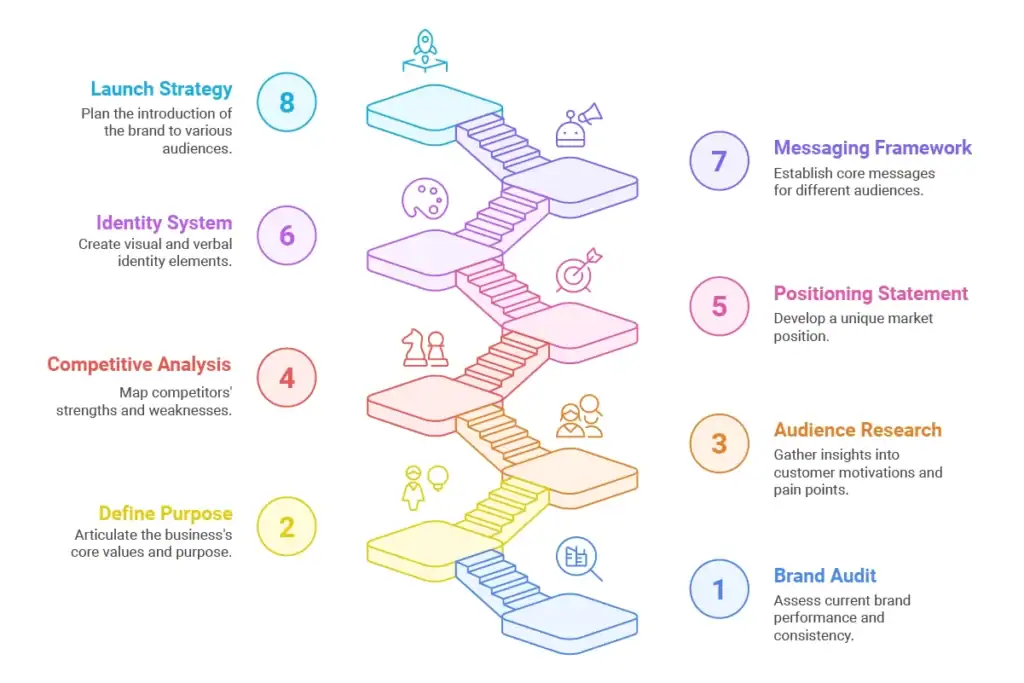
Evaluate your existing brand performance, perception, and coherence across touchpoints. Determine strengths to build on and gaps to fill prior to proceeding.
Collaborate with principal stakeholders to define why your company exists outside of profit and the essential principles that will inform your choices. These should be stable foundations even as tactical strategies change.
Collect quantitative information and qualitative observations regarding your ideal consumer. Beyond readily apparent demographics, know their motivations, their pain points, and how they make decisions.
Chart your competitors' positioning, relative strengths, and weaknesses to look for opportunities to differentiate. Examine both direct competitors as well as brands in related categories that could affect customer expectations.
Write a compelling, brief statement that articulates your differentiated spot in the market and the essential benefit that you provide customers that competitors cannot. Validate this positioning with customers to make sure it works.
Define or enhance your visual and verbal identity components to support your positioning. Have these components function well in all required applications and will expand as your business does.
Define your core messages and how they evolve for different customer segments, channels, and stages of the journey. Write this down in a messaging guide that's accessible to all teams.
Organize how you will roll out your new or redesigned brand to various audiences, such as customers, employees, partners, and investors. Think about both initial launch activities and long-term implementation.
These real-world tools can assist you in executing an efficient brand development strategy:
This graphic planning tool assists in overlaying the main components of your brand strategy on one page. The canvas often has fields for purpose, positioning, personality, promise, and proof points. Having it ensures you have covered all vital components and assists in conveying your strategy to team members.
This visualization method tracks every touchpoint where customers engage with your brand, from first awareness to purchase and retention loyalty. By tracking the emotional journey in parallel with functional stages, you'll discover ways to enhance brand connections at pivotal points.
Regular surveys, social listening, and review analysis enable monitoring how customers view your brand versus competitors. Creating baseline metrics enables measuring the effects of your brand development activities over time.
Today's brand guides must be dynamic digital documents that assist team members and partners in using your brand appropriately. Tools such as Frontify or Brandfolder provide accessible brand assets and guidelines with the ability to update them as your brand changes.
Avoid these pitfalls that often undermine brand development efforts:
Brands create strategies around what company executives like instead of what they can understand and connect with among desired customers. Always prove decisions by actual customers' feedback.
Even the most genius brand strategies flop when they are implemented inconsistently. Spend in good documentation, training, and governance so that your brand is conveyed consistently across all touch points.
Brand building is a long-term proposition that creates wealth in the years to come. Refrain from compromising brand values for short-term sales maneuvers that may increase quarterly performance at the expense of long-term brand value.
Your staff provides your brand experience, yet a lot of organizations concentrate on external communication and overlook internal comprehension and acceptance. Prioritize aiding your staff to comprehend and accept your brand strategy.
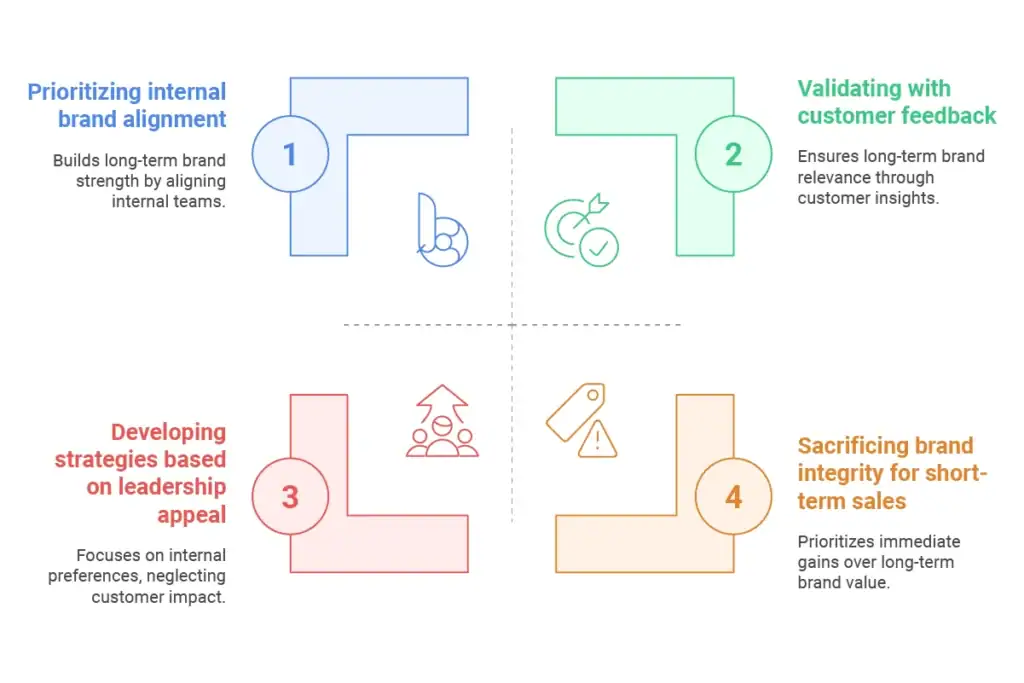
Brands need to change in order to stay relevant as customer expectations and markets shift. Strategic brand evolution planning walks the line between consistency and required adaptation.
Successful brand evolution includes:
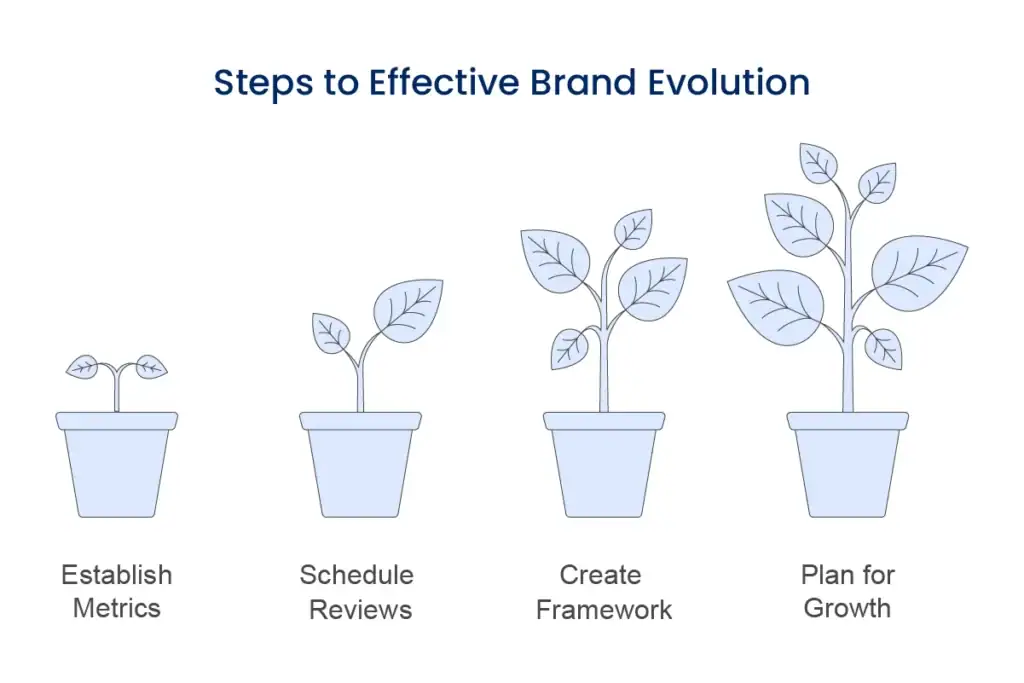
Identify key performance indicators that indicate when elements of your brand strategy require updating
Run yearly reviews of brand performance and relevance
Define specific processes for making brand decisions and driving change
Consider how your brand will evolve to respond to new markets, products, or business models
The most resilient brands preserve their center but change how they express it to stay culturally on point and attuned to shifting customer needs.
Successful brand development strategy needs clear measures to monitor progress and prove business results. Review these measurement methods:
Monitor unaided and aided brand awareness, as well as core perception qualities consistent with your target positioning. Periodic surveys can provide baselines and quantify improvements over time.
Track measures such as Net Promoter Score (NPS), customer retention, and customer lifetime value to determine the effect of your brand strategy on customer relationships.
Measure branded content engagement by channel to determine what brand messages resonate most with various audience groups.
Link brand development activities to business performance by measuring indicators such as price premium, customer acquisition cost, and revenue growth versus competition.
The most advanced brand measurement methods integrate these measures into a complete brand equity model that measures your brand’s contribution to business value.
Strategic brand development creates enduring business value by establishing meaningful relationships with customers. Brands that invest in deliberate strategy development in today’s fast-moving marketplace benefit greatly over competitors relying on tactical marketing alone.
Keep in mind that brand-building is a continuous effort rather than a one-off assignment and is a refining and evolving process. The greatest brands keep the same purpose and values but evolve their expression to stay relevant as markets and consumer demands shift.
Following these guidelines and best practices, you will establish a brand that resonates with your audience, helps differentiate your business, and creates long-term competitive advantage.
Establishing a strong brand involves strategic planning and creative execution. If you are seeking expert advice to form or solidify your brand strategy, our seasoned brand strategists can assist you in establishing a unique brand that fuels business success.

Enter your email to get instant access